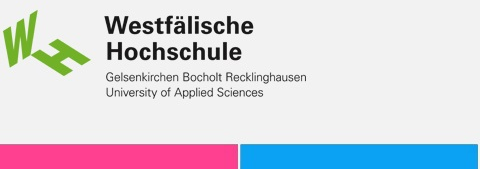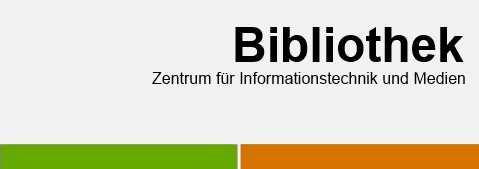Institut für biologische und chemische Informatik
Filtern
Dokumenttyp
- Wissenschaftlicher Artikel (17)
- Konferenzveröffentlichung (5)
- Preprint (5)
Schlagworte
- OCSR (2)
- AI (1)
- CDK (1)
- Chemical space (1)
- Chemical structure depictions (1)
- Cheminformatics (1)
- Chemistry Development Kit (1)
- Chemistry Development Kit, CDK, Molecule fragmentation, In silico fragmentation, Scaffolds, Functional groups, Glycosidic moieties, Rich client, Graphical user interface, GUI (1)
- Clustering (1)
- Deep learning (1)
The number of publications describing chemical structures has increased steadily over the last decades. However, the majority of published chemical information is currently not available in machine-readable form in public databases. It remains a challenge to automate the process of information extraction in a way that requires less manual intervention - especially the mining of chemical structure depictions. As an open-source platform that leverages recent advancements in deep learning, computer vision, and natural language processing, DECIMER.ai (Deep lEarning for Chemical IMagE Recognition) strives to automatically segment, classify, and translate chemical structure depictions from the printed literature. The segmentation and classification tools are the only openly available packages of their kind, and the optical chemical structure recognition (OCSR) core application yields outstanding performance on all benchmark datasets. The source code, the trained models and the datasets developed in this work have been published under permissive licences. An instance of the DECIMER web application is available at https://decimer.ai.
The development of deep learning-based optical chemical structure recognition (OCSR) systems has led to a need for datasets of chemical structure depictions. The diversity of the features in the training data is an important factor for the generation of deep learning systems that generalise well and are not overfit to a specific type of input. In the case of chemical structure depictions, these features are defined by the depiction parameters such as bond length, line thickness, label font style and many others. Here we present RanDepict, a toolkit for the creation of diverse sets of chemical structure depictions. The diversity of the image features is generated by making use of all available depiction parameters in the depiction functionalities of the CDK, RDKit, and Indigo. Furthermore, there is the option to enhance and augment the image with features such as curved arrows, chemical labels around the structure, or other kinds of distortions. Using depiction feature fingerprints, RanDepict ensures diversely picked image features. Here, the depiction and augmentation features are summarised in binary vectors and the MaxMin algorithm is used to pick diverse samples out of all valid options. By making all resources described herein publicly available, we hope to contribute to the development of deep learning-based OCSR systems.
Recent years have seen a sharp increase in the development of deep learning and artificial intelligence-based molecular informatics. There has been a growing interest in applying deep learning to several subfields, including the digital transformation of synthetic chemistry, extraction of chemical information from the scientific literature, and AI in natural product-based drug discovery. The application of AI to molecular informatics is still constrained by the fact that most of the data used for training and testing deep learning models are not available as FAIR and open data. As open science practices continue to grow in popularity, initiatives which support FAIR and open data as well as open-source software have emerged. It is becoming increasingly important for researchers in the field of molecular informatics to embrace open science and to submit data and software in open repositories. With the advent of open-source deep learning frameworks and cloud computing platforms, academic researchers are now able to deploy and test their own deep learning models with ease. With the development of new and faster hardware for deep learning and the increasing number of initiatives towards digital research data management infrastructures, as well as a culture promoting open data, open source, and open science, AI-driven molecular informatics will continue to grow. This review examines the current state of open data and open algorithms in molecular informatics, as well as ways in which they could be improved in future.
The influence of molecular fragmentation and parameter settings on a mesoscopic dissipative particle dynamics (DPD) simulation of lamellar bilayer formation for a C10E4/water mixture is studied. A “bottom-up” decomposition of C10E4 into the smallest fragment molecules (particles) that satisfy chemical intuition leads to convincing simulation results which agree with experimental findings for bilayer formation and thickness. For integration of the equations of motion Shardlow’s S1 scheme proves to be a favorable choice with best overall performance. Increasing the integration time steps above the common setting of 0.04 DPD units leads to increasingly unphysical temperature drifts, but also to increasingly rapid formation of bilayer superstructures without significantly distorted particle distributions up to an integration time step of 0.12. A scaling of the mutual particle–particle repulsions that guide the dynamics has negligible influence within a considerable range of values but exhibits apparent lower thresholds beyond which a simulation fails. Repulsion parameter scaling and molecular particle decomposition show a mutual dependence. For mapping of concentrations to molecule numbers in the simulation box particle volume scaling should be taken into account. A repulsion parameter morphing investigation suggests to not overstretch repulsion parameter accuracy considerations.
Developing and implementing computational algorithms for the extraction of specific substructures from molecular graphs (in silico molecule fragmentation) is an iterative process. It involves repeated sequences of implementing a rule set, applying it to relevant structural data, checking the results, and adjusting the rules. This requires a computational workflow with data import, fragmentation algorithm integration, and result visualisation. The described workflow is normally unavailable for a new algorithm and must be set up individually. This work presents an open Java rich client Graphical User Interface (GUI) application to support the development of new in silico molecule fragmentation algorithms and make them readily available upon release. The MORTAR (MOlecule fRagmenTAtion fRamework) application visualises fragmentation results of a set of molecules in various ways and provides basic analysis features. Fragmentation algorithms can be integrated and developed within MORTAR by using a specific wrapper class. In addition, fragmentation pipelines with any combination of the available fragmentation methods can be executed. Upon release, three fragmentation algorithms are already integrated: ErtlFunctionalGroupsFinder, Sugar Removal Utility, and Scaffold Generator. These algorithms, as well as all cheminformatics functionalities in MORTAR, are implemented based on the Chemistry Development Kit (CDK).
The concept of molecular scaffolds as defining core structures of organic molecules is utilised in many areas of chemistry and cheminformatics, e.g. drug design, chemical classification, or the analysis of high-throughput screening data. Here, we present Scaffold Generator, a comprehensive open library for the generation, handling, and display of molecular scaffolds, scaffold trees and networks. The new library is based on the Chemistry Development Kit (CDK) and highly customisable through multiple settings, e.g. five different structural framework definitions are available. For display of scaffold hierarchies, the open GraphStream Java library is utilised. Performance snapshots with natural products (NP) from the COCONUT (COlleCtion of Open Natural prodUcTs) database and drug molecules from DrugBank are reported. The generation of a scaffold network from more than 450,000 NP can be achieved within a single day.


